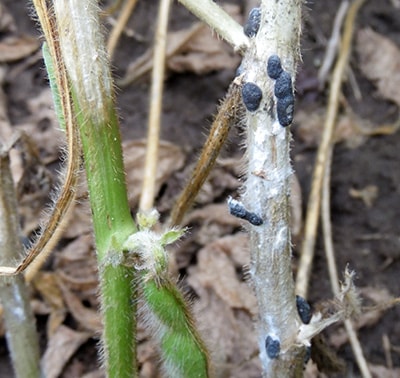Tips to give farmers an edge
By Diego Flammini, Farms.com
Farmers are always having to fight their way to success, whether it be by adhering to government regulations, dealing with the unpredictability of the weather, or warding off pests and diseases from their crops.
White mould has been a problem for farmers, but for soybean producers in Eastern Ontario, it’s been much more than that.
“Last year was probably the worst year in the last 10 for soybeans,” said Chris Gillard, Dry Bean Agronomy & Pest Management Assistant Professor at the University of Guelph’s Ridgetown Campus.
Gillard has come up with a checklist of things every grower should consider so they can have a better understanding of white mould and the dangers it can pose to their fields.

1.Size of the canopy
A full canopy will put your crop at risk of developing white mould.
2.Field’s moisture level
White mould can develop and start to spread when there’s a wet plant canopy for at least 72 hours.
3.Is the crop flowering?
Once the bean crop starts to flower, the risk of infection increases as the flowers provide a food source for the disease to grow and attack the soybeans.
4.Field history
A field that’s had white mould in recent years is still infected. Crop rotation is recommended, but it won’t eradicate the disease completely.
5.Yield potential and potential value
White mould is a disease of high-yielding crops with large canopies. If a high potential value is possible, fungicide application may be necessary
6.Weather forecast
Sunny skies and hot temperatures will reduce the crop’s potential for infection. Up to 28°C is ideal.
How does white mould work?
“Spores have been released inside the crop canopy and they’re not visible to the human eye,” said Gillard. “The spores land on the plant, then flower pedals from the plant often land on a branch and given the right weather conditions, will provide nutrients for the spores to germinate and start to grow.”
Gillard said there is a way to identify white mould on soybeans with the naked eye.
“Picture a funnel that’s about only 3-4mm across,” he said. “It sends that up the surface of the soil, the funnel opens up and the spores are inside that funnel. The wind takes them and blows them around. There are other fungi that do the same thing, so it takes some experience.”
Have you ever had to battle white mould? What measures did you take to do so?